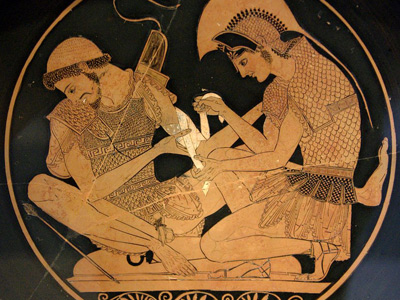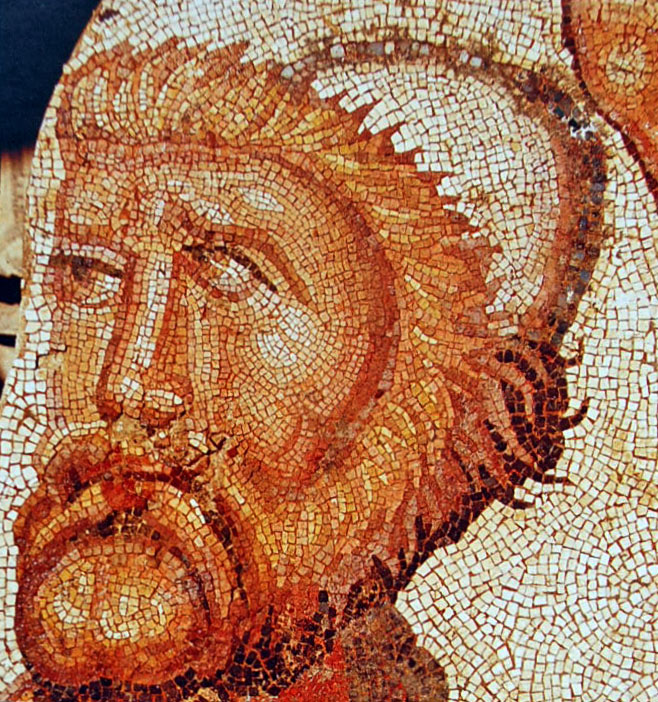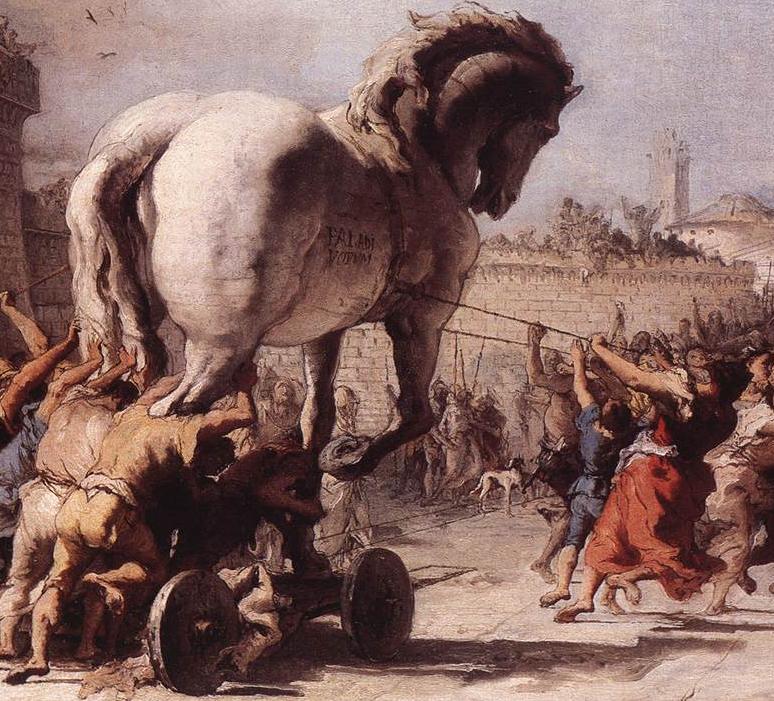Trojan War (1194–1184 BC)
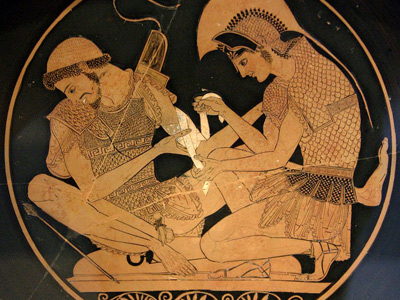
Second Gathering
Eight years after the storm had scattered them, the fleet of more than a thousand ships was gathered again. But when they had all reached Aulis, the winds ceased. The prophet Calchas stated that the goddess Artemis was punishing Agamemnon for killing either a sacred deer or a deer in a sacred grove, and boasting that he was a better hunter than she. The only way to appease Artemis, he said, was to sacrifice Iphigenia, who was either the daughter of Agamemnon and Clytemnestra, or of Helen and Theseus entrusted to Clytemnestra when Helen married Menelaus. Agamemnon refused, and the other commanders threatened to make Palamedes commander of the expedition. According to some versions, Agamemnon relented, but others claim that he sacrificed a deer in her place, or that at the last moment, Artemis took pity on the girl, and took her to be a maiden in one of her temples, substituting a lamb. Hesiod says that Iphigenia became the goddess Hecate.
The Achaean forces are described in detail in the Catalogue of Ships, in the second book of the Iliad. They consisted of 28 contingents from mainland Greece, the Peloponnese, the Dodecanese islands, Crete, and Ithaca, comprising 1186 pentekonters, ships with 50 rowers. Thucydides says that according to tradition there were about 1200 ships, and that the Boeotian ships had 120 men, while Philoctetes' ships only had the fifty rowers, these probably being maximum and minimum. These numbers would mean a total force of 70,000 to 130,000 men. Another catalogue of ships is given by the Bibliotheca that differs somewhat but agrees in numbers. Some scholars have claimed that Homer's catalogue is an original Bronze Age document, possibly the Achaean commander's order of operations. Others believe it was a fabrication of Homer.
The second book of the Iliad also lists the Trojan allies, consisting of the Trojans themselves, led by Hector, and various allies listed as Dardanians led by Aeneas, Zeleians, Adrasteians, Percotians, Pelasgians, Thracians, Ciconian spearmen, Paionian archers, Halizones, Mysians, Phrygians, Maeonians, Miletians, Lycians led by Sarpedon and Carians. Nothing is said of the Trojan language; the Carians are specifically said to be barbarian-speaking, and the allied contingents are said to have spoken multiple languages, requiring orders to be translated by their individual commanders. It should be noted, however, that the Trojans and Achaeans in the Iliad share the same religion, same culture and the enemy heroes speak to each other in the same language, though this could be dramatic effect.
HISTORY
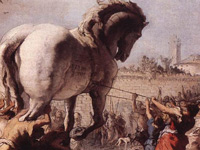
RESOURCES
This article uses material from the Wikipedia article "Trojan War", which is released under the Creative Commons Attribution-Share-Alike License 3.0.
© Stories Preschool. All Rights Reserved.
